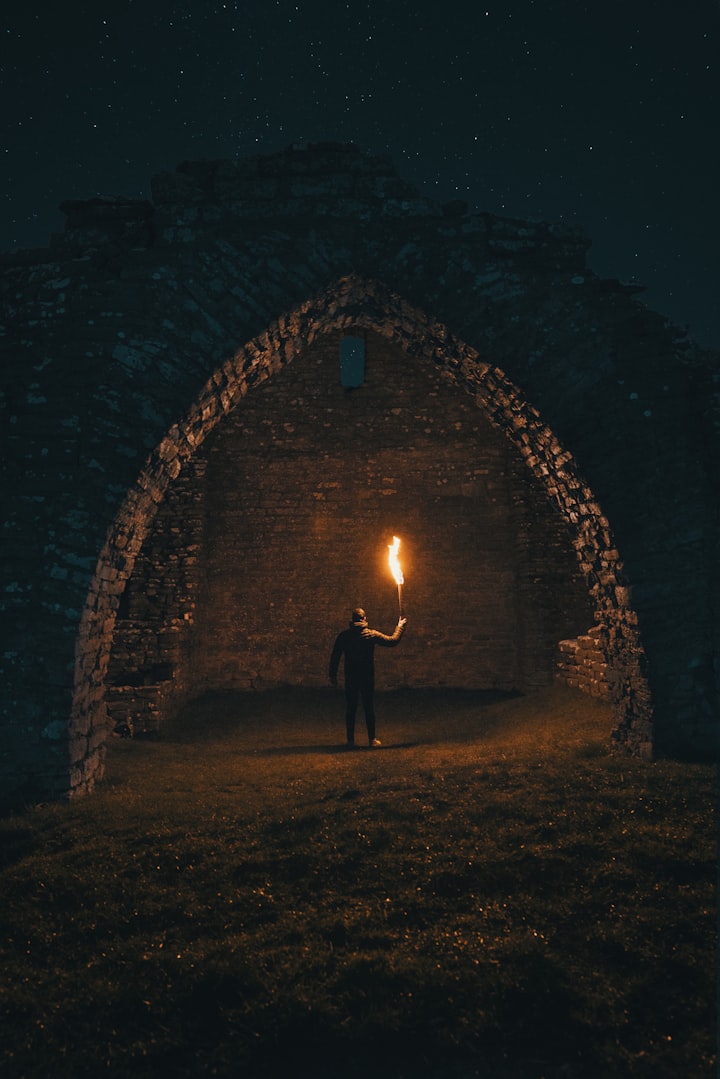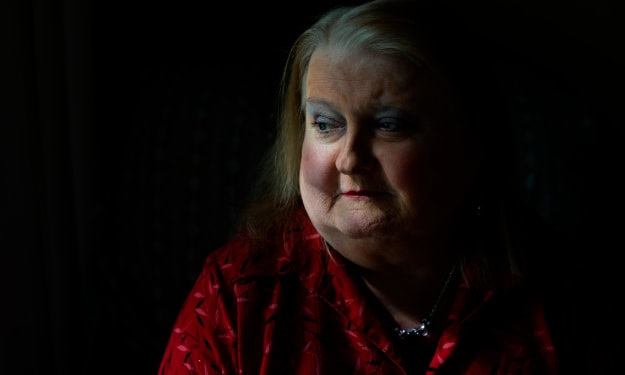Crafting Compelling Antiheroes in Dark Fantasy: Tips and Techniques
A Dark Fantasy Blog

The concept of the antihero, a figure that has long captivated and intrigued writers and readers alike, is fascinating. Unlike traditional heroes who embody virtues such as courage and selflessness, antiheroes blur the lines between right and wrong, often walking a morally grey path that challenges societal norms. Crafting a compelling antihero involves delving into the complexities of their character, examining their motivations, flaws, and internal conflicts that drive their actions.
When creating an antihero in dark fantasy, it is crucial to strike a delicate balance between making them relatable and maintaining an air of unpredictability. Readers should empathize with their struggles and vulnerabilities and feel uneasy about their darker tendencies. By subverting expectations and defying conventional hero tropes, antiheroes add depth and realism to the narrative, forcing readers to question their moral compass. The best antiheroes are multidimensional characters who evolve throughout the story, grappling with their inner demons while navigating a world steeped in darkness and uncertainty, challenging societal norms.
Definition of Antiheroes in Dark Fantasy
Antiheroes hold a unique and intriguing position. Defined by their moral ambiguity, antiheroes challenge traditional notions of heroism and villainy. They possess a complexity that blurs the lines between good and evil, often walking a fine line between noble intentions and questionable methods.
Unlike conventional heroes who embody virtues like courage and selflessness, antiheroes often display traits such as cynicism, selfishness, or even cruelty. Despite their flaws, they are compelling characters whose internal struggles resonate with readers on a deeper level. By subverting expectations and defying conventions, antiheroes in dark fantasy open new avenues for exploring the human psyche and shed light on the darker aspects of human nature.
They serve as mirrors reflecting the shadows within us all. Their journey is one of redemption or damnation, adding complexity to the narrative and challenging readers to confront uncomfortable truths about themselves. By delving into the complexities of antiheroes in dark fantasy, writers can craft richer and more nuanced stories that resonate with audiences long after turning the final page.
Characteristics of a Compelling Antihero
The allure of an antihero lies in their complex nature, with characteristics that blur the lines between good and evil.
• A compelling antihero is often morally ambiguous, driven by personal motives that may not always align with traditional heroic values.
• They walk the fine line between light and darkness, grappling with inner turmoil and conflicting emotions that make them unpredictable yet relatable to readers.
• A captivating antihero possesses a sense of vulnerability or brokenness that adds layers to their character. This vulnerability humanizes them, allowing readers to empathize with their struggles and flaws.
• While they may make questionable choices or act morally greyly, this imperfection draws the audience in and keeps them invested in the character's journey.
Ultimately, this internal conflict and nuanced portrayal of morality sets a compelling antihero apart from a conventional hero, making them a fascinating choice for dark fantasy storytelling.

Moral Ambiguity, Flaws, Complexity, Vulnerability
Antiheroes thrive on moral ambiguity, flaws, complexity, and vulnerability. These traits add layers to their character, making them more relatable and intriguing to the audience. By blurring the lines between right and wrong, antiheroes challenge conventional notions of heroism and invite readers to explore shades of gray in storytelling.
Flawed protagonists are not merely broken individuals; they are mirrors reflecting the imperfect aspects of humanity. Their struggles resonate with readers on a deeper level as they navigate through difficult choices and personal shortcomings. Embracing vulnerability humanizes these characters, evoking empathy from audiences who see themselves reflected in their strengths and weaknesses.
Crafting compelling antiheroes requires a delicate balance between darkness and light, showcasing the intricacies of their personalities without simplifying them into stereotypes. By embracing moral ambiguity and flaws while exploring their complex inner lives, authors can breathe life into characters that defy traditional hero archetypes and leave a lasting impact on readers long after the story ends.

Establishing Backstory and Motivation
Establishing a compelling backstory and motivation for your antihero is crucial in creating a truly unforgettable character. Delving into their past traumas, experiences, or decisions that have shaped who they are today gives depth to their persona. By understanding the origins of their darkness or moral ambiguity, readers can empathize with the complexities of their journey.
Motivation is the driving force behind an antihero's actions and decisions. It could stem from revenge, survival, justice, or even redemption. Ensure their motives are believable and well-developed to add authenticity to their character arc. Layering conflicting motivations can also add depth and complexity to the antihero's psyche, making them more relatable and multi-dimensional to readers.
Trauma, Inner Conflict, Relatable Struggles
Crafting antiheroes with depth and complexity in dark fantasy narratives often involves delving into themes of trauma, inner conflict, and relatable struggles. These elements add layers to the characters, making them more compelling and human. By exploring the impact of past traumas on the antihero's psyche, writers can showcase their vulnerabilities and flawed nature in a way that resonates with readers.
Inner conflicts stemming from unresolved emotions or moral dilemmas can create a sense of internal tension within the antihero, driving their decisions and actions in unpredictable ways. This internal struggle adds a rich texture to the character's development, showing how they navigate between their darker impulses and desires for redemption. Relatable struggles such as inadequacy, betrayal by loved ones, or a sense of isolation can further humanize the antihero, making them more relatable to readers who have experienced similar hardships.
Developing Unique Personality Traits and Quirks
In dark fantasy, crafting compelling antiheroes requires more than a brooding exterior or a tragic past. One key element that can truly elevate an antihero is the development of unique personality traits and quirks that set them apart from traditional heroes. Embracing unconventional characteristics can make these characters more relatable and intriguing to readers, allowing them to connect on a deeper level.
Consider giving your antihero unexpected hobbies or passions that seem at odds with their darker nature, adding layers to their persona. Perhaps they love gardening amidst the chaos of war or a talent for playing musical instruments in solitude. These quirks make the characters more memorable and serve as windows into their inner struggles and complexities, offering insights into what drives their questionable actions and decisions. By developing these distinct personality traits, you can create an antihero that challenges stereotypes and leaves a lasting impact on your readers' minds.

Unpredictability, Unconventional Choices, Dark humor
In dark fantasy, antiheroes often thrive on unpredictability and unconventional choices. These complex characters challenge traditional norms, blurring the lines between heroism and villainy. Embracing the chaotic nature of their existence, they make decisions that keep readers and other characters on edge, never knowing what to expect next.
Dark humor is a hallmark trait of many antiheroes, offering a twisted lens through which to view their actions and motivations. It serves as a coping mechanism in the face of adversity, adding depth to their personalities while unsettling those around them. This blending of darkness and levity creates a nuanced narrative that intrigues audiences at every turn.
Crafting Complex Relationships and Dynamics
Crafting complex relationships and dynamics in dark fantasy storytelling involves navigating the murky waters of human emotions and motivations. One key aspect is creating multifaceted character connections to add intrigue and tension. By delving into the intricate web of alliances, rivalries, and betrayals, writers can build a rich tapestry of interactions that drive the narrative forward.
Furthermore, exploring power dynamics within relationships can bring depth to characters and amplify the stakes in the story. Characters with conflicting agendas or hidden agendas can create compelling drama as they navigate their alliances and conflicts. By infusing these relationships with complexities such as manipulation, loyalty tested by betrayal, or moral ambiguity, writers can craft realistic and engaging interactions that resonate with readers emotionally.

Tension with Allies/Enemies, Moral Dilemmas
One crucial element to explore is the tension between allies and enemies. Moral dilemmas often emerge in this turbulent landscape filled with shifting loyalties and hidden agendas. Antiheroes must navigate these treacherous waters, forced to make difficult decisions that challenge their beliefs and values.
The interplay between allies turning into enemies and enemies becoming unexpected allies adds layers of depth to characters in dark fantasy. This dynamic tension intrigues the story and allows for surprising plot twists that keep readers on the edge. By facing moral dilemmas head-on, antiheroes can showcase their complexity and inner struggles, blurring the lines between right and wrong in a morally ambiguous world.
Writing Authentic Dialogue and Internal Monologue
Authentic dialogue and internal monologue are crucial when developing complex antiheroes in dark fantasy. These characters often live in shades of grey, constantly wrestling with their inner demons and conflicting beliefs. To truly bring them to life, it's essential to delve deep into their psyche and understand what drives their actions. Dialogue should reflect the character's unique voice, filled with nuance and layers that reveal their true nature.
Internal monologue provides a window into the character's thoughts and emotions, allowing readers to empathize with even the most morally ambiguous antiheroes. This introspection adds depth to their motivations and gives insight into the turmoil they face within themselves. By balancing dialogue that portrays external interactions with an internal monologue that showcases inner struggles, writers can create multidimensional antiheroes that captivate readers and keep them invested in the character's journey of redemption or damnation.
Inner Thoughts Revealing Conflicting Emotions and Desires
As their stoicism crumbles, the inner turmoil of conflicting emotions and desires reveals itself with raw intensity in the minds of antiheroes. There is a mesmerizing dance between light and shadow within them, a constant tug-of-war that shapes their actions and decisions in unforeseeable ways. The allure of power may clash with a deep sense of guilt, creating a symphony of discord within their very being.
These complex characters navigate through an intricate labyrinth of thoughts and feelings, each vying for dominance over the other. The longing for redemption battles against the seductive call of darkness, blurring the lines between right and wrong. This internal battlefield propels them forward, leaving behind a trail of broken conventions and shattered expectations.

Balancing Redemption and Consequences
The portrayal of antiheroes walks a fine line between redemption and consequences. These complex characters often blur the boundaries between good and evil, grappling with internal struggles that mirror those we face in our own lives. Balancing their path to redemption with the unavoidable consequences of their actions gives these antiheroes depth and resonance.
In crafting compelling antiheroes, it's essential to consider how their journey toward redemption intertwines with the repercussions of their past deeds. Their choices reveal their internal moral compass and showcase the harsh realities of a world where every decision comes with a price. By exploring this delicate balance between seeking forgiveness and facing accountability, we can create characters that resonate with readers profoundly.
Ultimately, proper growth for an antihero lies in navigating the grey areas between right and wrong, learning from mistakes while still bearing the weight of their sins. These characters come alive on the page through this intricate dance of redemption and consequences, challenging our perceptions and sparking introspection about our moral dilemmas. Crafting compelling antiheroes requires us to confront uncomfortable truths about human nature while holding hope for redemption amidst darkness.
Opportunities for Growth vs Harsh Repercussions
The dichotomy between opportunities for growth and harsh repercussions serves as a compelling canvas to craft complex antiheroes. These characters often face morally ambiguous choices that can lead them down a path of redemption or deeper darkness. By exploring the delicate balance between these two elements, writers can create narratives that challenge conventional notions of heroism and villainy, giving rise to multi-dimensional protagonists who defy easy categorization.
One of the most intriguing aspects of portraying this internal conflict is how it allows for exploring human nature and the complexities of individual choice. Antiheroes grappling with difficult decisions showcase their vulnerability and flaws and highlight their capacity for growth and transformation. The tension between seizing opportunities for personal development and facing the harsh consequences of their actions adds depth to their character arcs, making them more relatable and compelling to readers immersed in the shadows of dark fantasy worlds.
Effective Techniques Lead to Memorable Antiheroes
Dive deep into the complexities of their characters. One effective technique is to blur the lines between good and evil, creating morally ambiguous individuals who walk a fine line between heroism and villainy. This adds layers to their persona, making them unpredictable and unforgettable.
Another critical aspect is giving antiheroes relatable motivations for their actions. Readers are drawn to characters with flaws and inner conflicts that mirror real-life struggles. Showcasing the internal turmoil of an antihero grappling with conflicting desires humanizes them and makes their journey all the more compelling. When done effectively, these techniques can lead to the creation of genuinely memorable antiheroes that resonate with readers long after they've turned the final page.
This requires a delicate balance of flaws and redeeming qualities. By humanizing these characters, authors can evoke empathy from readers and challenge traditional notions of heroism. Remember that antiheroes thrive in shades of gray, their moral ambiguity adding depth to the narrative and sparking introspection in the audience.
Ultimately, the success of an antihero lies in their ability to drive the story forward through unpredictable actions and complex motivations. As writers delve into the psyche of these flawed protagonists, they must resist the urge to romanticize or vilify them, instead opting for nuanced portrayals that showcase their strengths and weaknesses. By embracing the complexity of antiheroes, authors can create narratives that resonate with audiences profoundly, leaving a lasting impact long after the final page is turned.
Thanks for reading my blog. If you can, give it a like or comment and share it on your social media platforms, as it gives me a boost in my readership. Join my newsletter on my Substack for all the latest on fiction and more dealing with fantasy, urban fantasy, cyberpunk, and grimdark!
About the Creator
Matthew Angelo
I am a traditional and self-published author and content/copywriter. I write in many genres like fantasy, urban fantasy, horror, cyberpunk, grimdark, romance and science fiction.






Comments
There are no comments for this story
Be the first to respond and start the conversation.